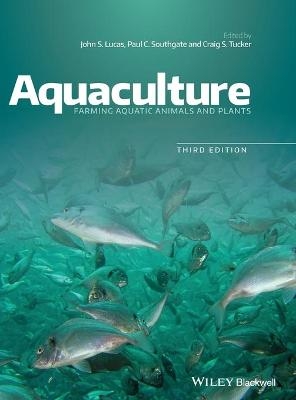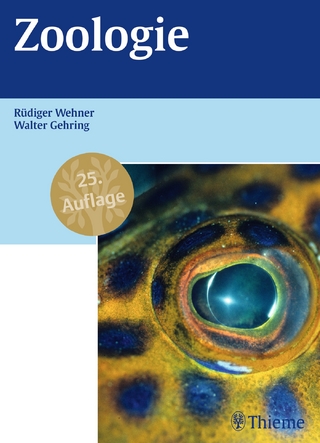
Aquaculture
John Wiley & Sons (Verlag)
978-1-119-23086-1 (ISBN)
This new edition of Aquaculture: Farming Aquatic Animals and Plants covers important aspects of the culture of fish, shellfish, and algae in freshwater and marine environments. Subject areas covered include principles of aquaculture, water quality, environmental impacts of aquaculture, desert aquaculture, reproduction, life cycles and growth, genetics and stock improvement, nutrition and feed production, diseases, vaccination, post-harvest technology, economics and marketing, and future developments of aquaculture. Separate chapters also cover the culture of algae, carps, salmonids, tilapias, catfish, marine and brackish fishes, soft-shelled turtles, barramundi, marine shrimp, mitten crabs, and other decapod crustaceans, bivalves, gastropods, and ornamental species. This edition also provides greater coverage of aquaculture in China, reflecting the country’s importance in the global scene.
Providing core scientific and commercially useful information, and written by 35 eminent international authors, this expanded and fully updated Third Edition of Aquaculture is essential reading for all students and professionals studying and working in aquaculture. Fish farmers, hatchery managers, and those in aquaculture support and supply industries, such as feed manufacturing, will find an abundance of commercially useful information within this important and now established book.
Describes the multitude of developments that have occurred within the aquaculture field over the last 15 years
Includes a major revision of production statistics and trends, discussion of technical developments, and revised and extended coverage provided by broader international authorship
Brings together 35 internationally recognized contributors, including a number of new contributors
Aquaculture: Farming Aquatic Animals and Plants, Third Edition is a recommended text for students of the subject and a concise reference for those working in or entering into the industry.
Dieses Buch zeigt übersichtlich die wichtige und unterstützende Rolle der Aquakultur für die Lebensmittelsicherheit, den Erhalt der Lebensgrundlagen und die wirtschaftliche Entwicklung auf der ganzen Welt.
Diese neue Auflage von Aquaculture: Farming Aquatic Animals and Plants beschäftigt sich mit wesentlichen Aspekten der Kultur von Fischen, Schalentieren und Algen in Süß- und Salzwasser. Zu den behandelten Themen gehören: Prinzipien der Aquakultur, Wasserqualität, Umweltauswirkungen auf die Aquakultur, Aquakultur in der Wüste, Reproduktion, Lebenszyklen und Wachstum, Genetik und Bestandsverbesserung, Fütterung und Herstellung von Futtermitteln, Krankheiten, Impfungen, Post-Harvest-Technologien, Betriebswirtschaft und Marketing, zukünftige Entwicklung der Aquakultur.
In speziellen Kapiteln geht es auch um die Kultur von Algen, Karpfen, Salmoniden, Tilapia, Wels, Salz- und Brackwasserfischen, Weichschildkröten, Barramundi, Seegarnelen, Wollhandkrabben und sonstigen Dekapoden und Krebstieren, Muscheln, Gastropoden und Zierarten. In dieser Ausgabe wird die Aquakultur Chinas umfassender erläutert, auch die Bedeutung des Landes in einem globalen Kontext.
John S. Lucas, Adjunct Professor in School of Biological Sciences, University of Queensland, Brisbane, Queensland, Australia.
Paul C. Southgate, Professor in Tropical Aquaculture, University of the Sunshine Coast, Maroochydore, Queensland, Australia
Craig S. Tucker, Research Leader, Warmwater Aquaculture Research Unit, United States Department of Agriculture, Stoneville, Mississippi, USA
Preface to the Third Edition
Acknowledgements
Preface to the Second Edition
Preface to the First Edition
List of Contributors
1 Introduction
John Lucas
1.1 What is and what isn t aquaculture?
1.2 The origins of aquaculture and agriculture
1.3 Aquaculture and capture fisheries production
1.4 The efficiency of aquaculture for food production
1.5 Has there been a Blue Revolution ?
1.6 China
1.7 Issues for developed countries
1.8 An allegory
1.9 Diversity of aquaculture
1.10 Fishery stock enhancement and restoration
1.11 Summary
2 Principles of Aquaculture
Paul C. Southgate and John S. Lucas
2.1 Introduction
2.2 Intensity of aquaculture
2.3 Polyculture
2.4 Integrated agri-aquaculture systems
2.5 Static, open, semi-closed and recirculating (closed) systems
2.6 Selecting a new species for farming
2.7 Developing a new farm or a new farmed species
2.8 Case studies
2.9 Summary
3 Aquaculture Systems Design
Igor Pirozzi, Paul C. Southgate and John S. Lucas
3.1 Introduction
3.2 Site selection and development
3.3 Aquaculture systems
3.4 Pumps and Plumbing
3.5 Hatchery Systems
3.6 Summary
4 Water Quality
Claude E. Boyd and Craig S. Tucker
4.1 Introduction
4.2 Water Quality Variables
4.3 Effects of Water Quality on Aquatic Animals
4.4 Water Quality Management
4.5 Effluents
4.6 Summary
5 Resource Use and the Environment
Claude E. Boyd, Aaron A. McNevin, Craig S. Tucker
5.1 Introduction
5.2 An Overview of Resource Use and Environmental Issues
5.3 Land Use
5.4 Water Use
5.5 Energy Use
5.6 Feed-Fish Use
5.7 Chemicals
5.8 Water Pollution
5.9 Best Management Practices
5.10 Environmental Advocacy
5.11 Summary
6 Reproduction, Life Cycles and Growth
John S. Lucas and Paul C. Southgate
6.1 Introduction
6.2 Reproductive physiology
6.3 Life cycles
6.4 Growth
6.5 Summary
7 Genetics
Rex Dunham
7.1 Introduction
7.2 Basic genetics
7.3 Epigenetics
7.4 Domestication and strain evaluation
7.5 Selection
7.6 Inbreeding and maintenance of genetic quality
7.7 Crossbreeding and hybridization
7.8 Chromosomal techniques
7.9 Xenogenesis
7.10 Genetic engineering
7.11 Gene editing
7.12 Combining genetic enhancement programs
7.13 Genotype-environment interactions
7.14 Future developments
7.15 Summary
References
8 Nutrition and Feeds
Lou D Abramo
8.1 Introduction
8.2 Energy consumption and partitioning (bioenergetics)
8.3 The relationship between growth and food consumption
8.4 Requirements and metabolic functions of nutrients
8.5 Digestion and assimilation of food
8.6 Formulation, manufacture and digestibility of feeds
8.7 Nutrition management strategies
8.8 Feed management
8.9 Emerging research areas
8.10 Summary
9 Hatchery and Larval Foods
Paul C. Southgate
9.1 Introduction
9.2 Foods for hatchery culture systems
9.3 Microalgae
9.4 Zooplankton
9.5 Feeding strategy for larval culture
9.6 Compound hatchery feeds
9.7 Development of artificial diets for fish larvae
9.8 Harvesting natural plankton
9.9 Pond fertilisation as a food source for aquaculture
9.10 Summary
10 Disease Principles
Leigh Owens
10.1 Introduction to disease
10.2 General principles of infectious diseases in aquaculture
10.3 The philosophy of disease control
10.4 Generalised disease management techniques
10.5 Major diseases
10.6 Summary
11 Pathogens and Parasites
Kate S Hutson and Kenneth D Cain
11.1 Introductions
11.2 Viruses
11.3 Bacteria
11.4 Fungi
11.5 Protozoans
11.6 Myxozoans
11.7 Platyhelminths
11.8 Nematodes
11.9 Acanthocephalans
11.10 Leeches
11.11 Crustaceans
11.12 Fish-borne zoonotic agents and aquaculture
11.13 Aquaponics
11.14 Summary
12 Prevention of disease by vaccination
Andrew Barnes
12.1. Introduction
12.2. A beginner s guide to fish immunology
12.3. Vaccinating fish
12.4. Types of vaccine
12.5. Routes of delivery
12.6. Adjuvants
12.7. Vaccination in practice
12.8. Research and development track for commercial fish vaccines
12.9. Future trends: vaccination in the age of genomics
12.10. Conclusions
12.11. Summary
13 Post-harvest Technology and Processing
Allan Bremner
13.1 Introduction
13.2 Basic characteristics
13.3 Safety and health
13.4 Nutritional aspects
13.5 The balance between safely and nutrition
13.6 Aquaculture and fisheries products
13.7 Harvesting
13.8 Live transport
13.9 Muscle structure: rigor and texture
13.10 Stunning and post-mortem processing
13.11 Effects of feed on the product
13.12 Specialised niche market products
13.13 Flavours and taints
13.14 Texture
13.15 Concepts: quality, freshness, shelf-life and quality index
13.16 Microbiology, specific spoilage organisms (SSO) and other spoilage processed
13.17 Freezing and frozen storage
13.18 Packaging
13.19 Quality control, quality assuarance, HACCP and risk assessment
13.20 Traceability, identification and origin
13.21 Canning
13.22 Smoking
13.23 Summary
14 Economics
Clem Tisdell
14.1 Introduction
14.2 Profitability from a business viewpoint (farm models)
14.3 Markets and marketing
14.4 Economies of scale and similar factors
14.5 Allowing for and coping with business risk and uncertainty
14.6 Economic assessment from a social standpoint
14.7 Summary
15 Seaweed and Microalgae Seaweed
Nicholas A. Paul
Micro-algae
Michael Borowitzka
15.1 General introductions
15.2 Seaweeds
15.3 Micro-algae
15.4 Summary
16 Carps
Sena De Silva and Qidong Wang
16.1 Introduction
16.2 Biology of the Important Carps in Aquaculture
16.3 Artificial Propagation
16.4 Nutrition
16.5 Culture Practices
16.6 Diseases
16.7 Genetic Improvement
16.8 Culture-Based Fisheries
16.9 Conclusions
16.10 Summary
17 Salmonids
John Purser
17.1 Introduction
17.2 Biology
17.3 Freshwater farming
17.4 Marine farming
17.5 Feeds
17.6 Grading and stocking densities
17.7 Maturation, sex-reversal and triploidy
17.8 Fish health
17.9 Harvesting and products
17.10 Environmental issues
17.11 Summary
18 Tilapias
Victor Suresh and Ram Bhujel
18.1 Introduction
18.2 Family, Species and Genetic Variation
16.3 Ecology and Distribution
18.4 Sex Determination and Reproduction
18.5 Control of Reproduction
18.6 Seed Production
18.7 Nutrition, Feeds and Feeding
18.8 Grow-Out Systems
18.9 Disease Management
18.10 Harvest, Processing and Marketing
18.11 Summary
19 Catfishes
Craig S. Tucker, Aaron McNevin, Les Torrans and Brian Bosworth
19.1 Introduction
19.2 Pangasiid Catfishes
19.3 Ictalurid Catfishes
19.4 Clariid Catfishes
19.5 Summary
20 Marine Finfish Aquaculture
Wade O. Watanabe, Md Shah Alam, Patrick M. Carroll1, Harry V. Daniels and Jeffrey M. Hinshaw
20.1 Introduction
20.2 Importance of Marine Fish Aquaculture
20.3 Hatcheries
20.4 Growout Systems
20.5 Nutrition and Feeds
20.6 Marine Fish in Aquaculture
20.7 Milkfish
20.8 European Seabass
20.9 Gilthead Sea Bream
20.10 Yellowtail Amberjack
20.11 Red Sea Bream
20.12 Cobia
20.13 Flatfish
20.14 Sturgeon
20.15 Summary
21 Soft-shelled Turtles
Qingjun Shao and John S. Lucas
21.1 Introduction
21.2 Biology
21.3 Aquaculture development
21.4 Culture facilities
21.5 Culture stages
21.6 Water quality
21.7 Nutrition, feeding and feed formulation
21.8 Infectious diseases
21.9 Harvesting and processing
21.10 The future of soft-shelled turtle farming
21.11 Summary
22 Marine Shrimp
Darryl Jory
22.1 Introduction
22.2 Cultured species
22.3 Grow-out systems
22.4 Preparation of ponds
22.5 Reproduction and maturation
22.6 Hatchery design and larval culture
22.7 Seedstock quality and stocking
22.8 Production management and harvest
22.9 Nutrition, formulated diets and feed management
22.10 Emerging production technologies and issues
22.11 Responsible shrimp farming and the challenge of sustainability
22.12 Summary
23 Freshwater decapod crustaceans
Chaoshu Zeng, John S. Lucas and Paul C. Southgate
23.1 Introduction
23.2 Farmed species
23.3 Chinese mitten crabs
23.4 Freshwater crayfish
23.5 Freshwater prawns
23.6 Summary
24 Bivalve molluscs
John S. Lucas
24.1 Introduction
24.2 Aspects of biology
24.3 Farmed bivalves
24.4 Phases of bivalve aquaculture
24.5 Farming problems
24.6 Introductions and other environmental issues
24.7 Industry reviews
24.8 The future of bivalve aquaculture
24.9 Summary
25 Abalone
Peter Cook
25.1 Introduction
25.2 Biology
25.3 Culture techniques
25.4 Postlarvae and juveniles
25.5 Grow-out systems
25.6 Diseases and parasites
25.7 The world abalone market
25.8 Summary
26 Aquaculture in the aquarium industry
Thane A. Militz
26.1 Introduction
26.2 The aquarium industry
26.3 The need for aquaculture in the aquarium industry
26.4 Aquaculture of tropical freshwater organisms
26.5 Aquaculture of tropical marine organisms
26.6 Sustainable development
26.7 The future of the aquarium industry
26.8 Summary
27 The Future of Aquaculture
John Hargreaves, Randall Brummett and Craig S. Tucker
27.1 Introduction
27.2 Drivers of Future Demand and Supply
27.3 Responding to the Challenges of the Future
27.4 Summary
| Erscheinungsdatum | 26.01.2016 |
|---|---|
| Verlagsort | New York |
| Sprache | englisch |
| Maße | 2160 x 2790 mm |
| Gewicht | 2062 g |
| Einbandart | gebunden |
| Themenwelt | Naturwissenschaften ► Biologie ► Zoologie |
| Technik ► Lebensmitteltechnologie | |
| Veterinärmedizin ► Allgemein ► Fleischhygiene / Lebensmittelkunde | |
| Weitere Fachgebiete ► Land- / Forstwirtschaft / Fischerei | |
| Schlagworte | Algen • Aquakultur • Fischproduktion • Karpfenzucht • Lachszucht • Lebensmittelindustrie |
| ISBN-10 | 1-119-23086-1 / 1119230861 |
| ISBN-13 | 978-1-119-23086-1 / 9781119230861 |
| Zustand | Neuware |
| Informationen gemäß Produktsicherheitsverordnung (GPSR) | |
| Haben Sie eine Frage zum Produkt? |
aus dem Bereich


